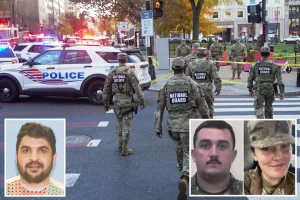The case of Luigi Mangione, the 26-year-old former Ivy League computer scientist accused of assassinating UnitedHealthcare CEO Brian Thompson, is unlikely to see federal charges, according to legal experts. While the high-profile nature of the case and the upcoming change in presidential administrations might suggest otherwise, several factors point to a state-level prosecution. Murder is typically not a federal crime, and while hiring a hitman who crosses state lines to commit murder is a federal offense, Mangione himself did not cross state lines. This crucial distinction limits the federal government’s jurisdiction in the case.
New York’s specific legal framework further reinforces the likelihood of a state prosecution. First-degree murder charges in New York are reserved for very specific circumstances, such as the killing of law enforcement officers or mass murders. Mangione currently faces a second-degree murder charge, which aligns with the state’s legal structure. Additionally, New York abolished the death penalty two decades ago, eliminating the possibility of capital punishment in this case, regardless of whether it is tried at the state or federal level. Even if the case were tried federally, the only aggravating factor potentially supporting the death penalty – substantial planning and premeditation – isn’t typically enough to warrant such a sentence.
Federal intervention in murder cases is usually driven by the need for stricter penalties or when local authorities lack the resources to effectively handle the case. However, in this instance, the NYPD is deemed well-equipped and capable of handling the investigation and prosecution. They have allegedly already linked Mangione’s fingerprints and weapon to the crime scene, building a strong case. Given the NYPD’s capabilities and the strength of the evidence, federal involvement is less likely.
Former federal prosecutor Neama Rahmani highlights the “Petite Policy,” which discourages federal prosecutors from intervening in ongoing state cases unless a substantial federal interest is at stake and not being addressed by the state prosecution. In Mangione’s case, such an interest appears to be absent, further diminishing the likelihood of federal charges. Furthermore, Rahmani points out that even if the federal government decides to pursue charges, the process could be delayed due to the upcoming transition in the U.S. Attorney’s office for the Southern District of New York. By the time a new U.S. attorney is confirmed and sworn in, the Manhattan District Attorney’s office will likely be well into its own prosecution.
The case has drawn parallels to the Unabomber, Ted Kaczynski, who committed federal crimes by sending bombs through the mail. Kaczynski’s case highlights a key difference: mailing bombs is inherently a federal offense due to its interstate nature. Mangione’s alleged actions, while horrific, lack this federal nexus. While the federal government does pursue the death penalty in some extreme cases, such as the Boston Marathon bombing, this typically involves acts of terrorism or other heinous offenses with multiple victims or occurring during the commission of another felony. Mangione’s case, while attracting significant attention, does not fall into this category.
Historically, federal executions have been relatively rare, with 16 occurring since 2001. Thirteen of these executions took place during President Trump’s first term. While Trump has indicated a desire to expand the use of the death penalty upon his return to office, this does not necessarily alter the jurisdictional limitations in Mangione’s case. The focus remains on whether federal involvement is warranted given the existing strong state case and the absence of clear federal jurisdiction. The case is likely to proceed under the purview of Manhattan District Attorney Alvin Bragg, whose office has already stated its intention to pursue charges, adding another layer of complexity given the recent scrutiny and criticism Bragg has faced in other high-profile cases.











